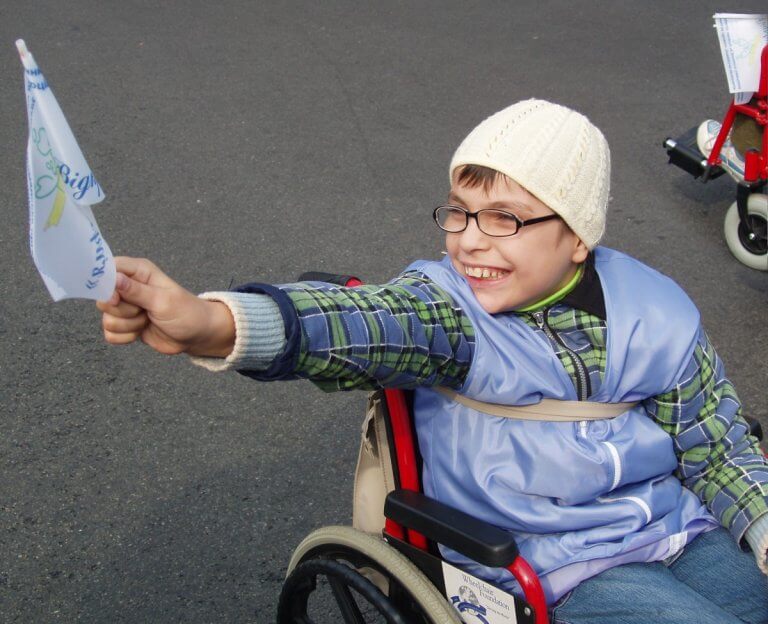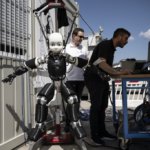
Figuring out how to make a school environment more conducive for students with special needs and disabilities is a continuous process.
Attending school or university can be challenging for these students, who often have to put their academic aspirations on the back burner if campuses don’t accommodate their needs.
For students with learning disabilities like autism and dyslexia, traditional learning methods often don’t work and they find themselves far behind their peers due to a lack of resources.
With teacher shortages and funding cuts widely reported worldwide, educators often struggle to meet the needs of special needs students.
But technology can play a big role in helping students work around their disabilities and enjoy a suitable learning environment.
Schools with limited funding may worry about using technology, fearing the costs are too high, but this is not necessarily the case.
At the Kolen ved Nordens Plads school in Copenhagen, Denmark, a K-12 school for children with special needs, the use of telepresence robots has drastically improved quality of life for students who are unable to physically attend.
Morten Jacobsen, an award-winning robotics-craftsman and technology scout who focuses on finding and implementing new technology in the school, recently explained how to go about it without spending a fortune.
In an exclusive interview with Study International, he said, “A telepresence robot is basically a FaceTime connection on wheels.”
At face value, it’s as simple as that – a WiFi-enabled iPad or tablet mounted on two wheels (like a Segway) which can be controlled using a controller or smartphone.
It has made life for thirteen-year-old student Yusuf a whole lot better as he can now attend school with his friends.
Yusuf suffers from a long-term physical illness which impairs his ability to travel to school, meaning he’s often confined at home.
He’s a bubbly kid who thrives on social interaction and loves being at school with his friends, but his illness became so bad that he now can’t manage to get there.
But thanks to a telepresence robot called Beam, he doesn’t have to miss out on classes or social activities.
He navigates his robot through classes, even greeting his friends at the school gate. Yusuf also takes part in school events and activities like bowling and carnivals.
Source: YouTube
Jacobsen said, “Not only does the use of this technology help Yusuf attend school, but it gives him greater quality of life and psychological motivation to be there alongside his peers.”
He explained that it’s very easy to use: “With the Beam brand, all you need to do is just install a piece of software which turns on the robot and he can see and hear everything that goes on in class, and they too, can see and hear him.”
WiFi was an issue at first as there weren’t access points everywhere in the school, like the school yard, but Jacobsen soon found a way around that.
“We invested a bit in making the robot its own WiFi hotspot so it’s enabled everywhere Yusuf takes it. But that can cost some money.
“A cheaper alternative is to use a camera for 360 livestreaming on YouTube, whereby a student can sit at home and watch everything that’s going on in class. He can’t move it around like a telepresence robot but he can still be engaged in the class and use the 360 degree function to get a wider view.”
If schools are still concerned about the financial aspect, Jacobsen says it’s actually cheaper in the long run.
“In Denmark, if a student is away from school more than three weeks in a row, it’s mandatory for them to send a teacher to their home for an hour each week.
“It can cost up to $480 (USD) a week for this teacher, whereby a robot costs around $2,400. After a few weeks, it becomes cheaper to use a robot.”
The use of technology-enabled robots can also help students with learning disabilities such as autism.
In Qatar, a special-needs primary school is helping Ghalia, a three-year-old girl on the autism spectrum, by giving her a new friend called Keepon.
Keepon is an interactive yellow snowman-shaped assistive robot which doesn’t have a mouth or eyebrows – on purpose.
Playing with the keepon #robot who makes R2D2 like noises ! pic.twitter.com/nqTTMRXyoh
— Olli Ohls (@olli_ohls) March 23, 2018
According to NY Mag, “The bond has been five months in the making, since, like many children with autism spectrum disorder (ASD), Ghalia is wary of strangers. Keepon has been patient with Ghalia, weathering tantrums when they were first getting to know each other and not taking it personally when she wouldn’t make eye contact at first.
“Now, it’s clear Ghalia is fond of her new friend: She tops Keepon’s head with a knit cap and offers a kiss. The fact that Keepon doesn’t have a mouth or eyebrows doesn’t deter Ghalia. It’s actually by design.”
Bio-roboticist Dr. John-John Cabibihan and his team at Qatar University leads the university’s programme in Doha in developing culturally sensitive robotics for the Middle East’s growing autistic population.
He told NY Mag, “Since the robot is less complex in its appearance, nonverbal behavior, and movements than a human, the child is attracted to it. Then, that can be an entry point for the therapist to introduce the behavior she wants the child to learn.”
Hifza Javed, an engineer who worked with Cabibihan on dispatching the robots to special-needs classrooms in Doha, said, “Complex communication is often overstimulating for children. This is exactly where social robots can be instrumental: They are small-size and friendly, and they communicate simply with uncomplicated words and easy-to-interpret instructions.”
Meanwhile in Singapore, an interactive education system has been developed to help students with special needs learn better.
Trialled at the MINDS Fernvale Gardens School (a school for children and youth with moderate to severe intellectual disability and Autism Spectrum Disorder) ever since 2018, the tool has shown positive results.
#WorldAutismDay : Using i-Tile technology to help special needs students learn values such as the need to take turns and teamwork.😃 #NTUsg https://t.co/SsKXR2NlpG
— NTU EEE (@NTU_EEE) April 3, 2019
According to Phys.org, “Research findings from the trials suggest that the design of the i-Tile learning activities, which incorporate purposeful movement, game-like elements and responsive audio-visual feedback, are effective in increasing and sustaining student engagement.”
Assoc Prof Goh, Associate Chair (Faculty) of the School of Computer Science and Engineering, said, “We set out to develop appropriate low-cost technology, which the teachers can readily incorporate movement, play and collaboration into their lessons, so that it engages the students in their learning.
Both schools and universities worldwide undoubtedly face challenges in adapting the learning environment for those with special needs, but technology can help cross these barriers.
Liked this? Then you’ll love…
Is it safe to use voice assistant technology in the classroom?







